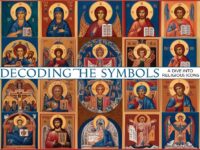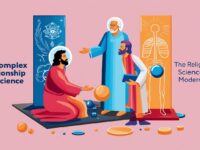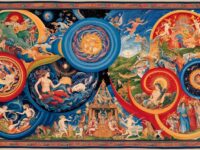In a world often marked by division and difference, there exists a serene realm where spiritual paths converge, offering profound insights into the mysteries of existence. This is the world of mystical journeys, where seekers of truth explore the depths of their faiths through Sufism, Kabbalah, and Christian mysticism. Despite their differing origins, these spiritual practices share a common thread—a quest for the divine that transcends dogma and doctrinal boundaries. Let’s embark on a journey to explore these mystical paths, uncovering the hidden wisdom that anchors them and the universal truths that connect them.
Exploring Spiritual Paths: Sufism, Kabbalah, and More
Sufism, often regarded as the heart of Islamic spirituality, emphasizes the inner, mystical dimension of Islam. It is a path that seeks to cultivate a deep, personal connection with the divine through practices like meditation, chanting, and devotional music. Sufis strive to transcend the ego and earthly attachments to attain a state of unity with God, known as ‘Tawhid.’ The teachings of celebrated Sufi poets like Rumi and Hafiz resonate with the universal yearning for love and transcendence, inviting both Muslims and non-Muslims alike to embark on this spiritual journey.
Kabbalah, the esoteric tradition within Judaism, explores the mysteries of the universe and the nature of God through a complex system of symbols and teachings. Often considered an advanced study of Jewish law and philosophy, Kabbalah delves into the mystical aspects of the Torah, offering insights into the divine structure of the cosmos. Central to Kabbalistic thought is the Tree of Life—a symbolic representation of the divine attributes and a roadmap for spiritual ascent. It’s a journey inward, encouraging adherents to seek enlightenment through contemplation and inner transformation.
Christian mysticism, meanwhile, centers on the pursuit of a direct and personal experience of God. This path often involves contemplative practices such as prayer, meditation, and the study of sacred texts. Throughout history, figures like St. John of the Cross and Teresa of Avila have illuminated the path to divine union, describing it as an ecstatic journey marked by trials and profound revelations. Christian mysticism invites believers to transcend the material world and enter a deep communion with the divine, offering a sanctuary of peace and understanding amid life’s chaos.
Unveiling Mystical Journeys Across Three Faiths
While Sufism, Kabbalah, and Christian mysticism each hail from distinct religious traditions, they share a striking commonality—a dedication to the mystical journey. Each path recognizes the limitations of literal interpretations and seeks to uncover deeper truths through allegory, metaphor, and symbolic language. This shared outlook fosters an interfaith dialogue, encouraging practitioners to learn from one another and to appreciate the diverse ways in which the divine can be experienced and interpreted.
In all three traditions, the journey is as significant as the destination. The process of seeking, questioning, and transforming is inherently valuable, guiding individuals toward enlightenment and self-discovery. These mystical paths prioritize personal experience and intuition, often challenging conventional religious norms. This focus on the individual’s spiritual journey allows for a more inclusive understanding of faith, one that transcends institutional boundaries and embraces a universal quest for truth.
By embracing the similarities and celebrating the differences among these mystical traditions, we gain a richer understanding of the human experience. Sufism, Kabbalah, and Christian mysticism offer unique perspectives on the divine, yet converge on the notion of an ongoing, personal journey toward enlightenment. These paths encourage us to look beyond the surface, inviting us to explore the profound mysteries of our existence and to find solace in the shared human longing for connection with something greater than ourselves.
The mystical journeys of Sufism, Kabbalah, and Christian mysticism paint a vivid tapestry of spiritual exploration that transcends religious boundaries. These paths remind us of the inherent unity in diversity, where each tradition offers its wisdom and insight while contributing to a collective understanding of the divine. As we delve into these mystical realms, we are invited to embark on our own spiritual journeys, guided by the light of ancient wisdom and a longing for deeper meaning. In embracing the mystical, we find not only a connection to the divine but also a bridge that unites us across the vast landscapes of belief and faith.

















